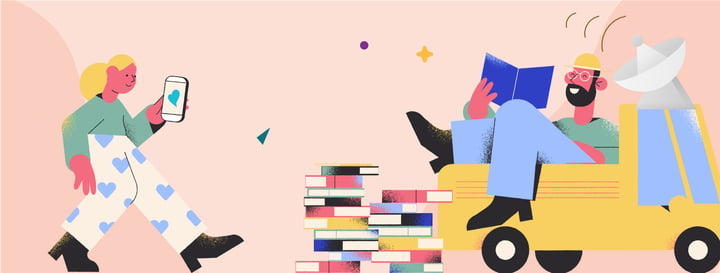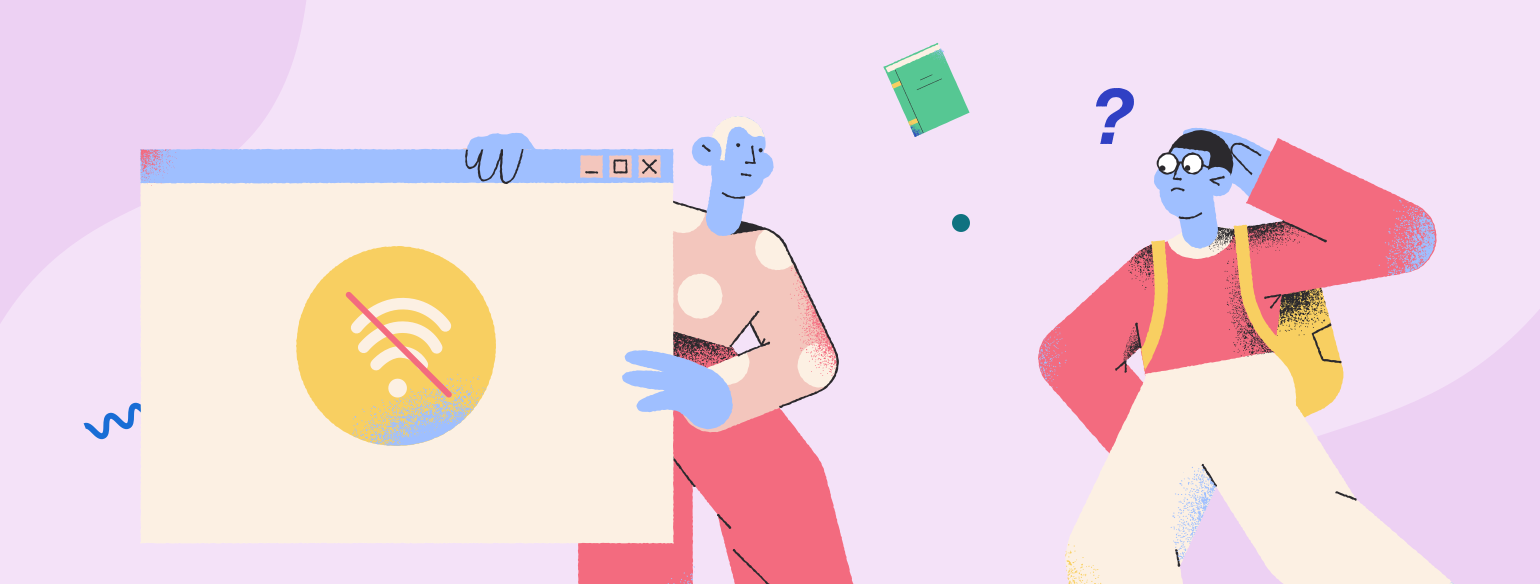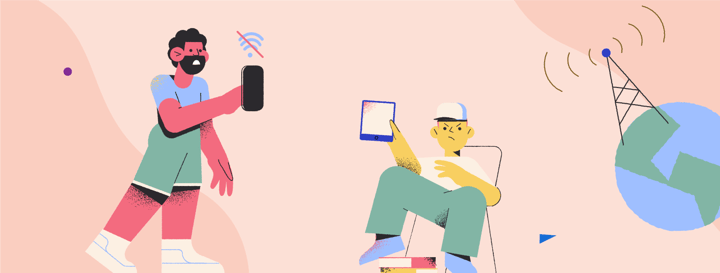This spring, our library client success team hosted a roundtable to discuss how libraries can help bridge the digital divide to reach and support community members without technology or internet access. Addressing low connectivity and limited technology access is crucial for the health and wellbeing of all communities, and especially now, as more and more of the world moves online.
Beanstack library client success manager and librarian-in-residence Rebekah Garrety led the discussion with two library clients as panelists: Teri Markson, senior librarian in the exploration and creativity department at Los Angeles Public Library, and Morgan Esterhuizen, youth services librarian at Radford Public Library in Virginia. More than 100 library partners joined live to ask questions, share experiences, and brainstorm tactics. Read on for tips and takeaways from the collaborative roundtable!
"It's an everybody issue"
The digital divide can manifest in many different ways, but it affects nearly all communities. Beanstack library partners in rural and urban areas, serving small and large populations, in coastal, midwestern, and mountainous regions, all experience a different facet of the struggle to equitably connect patrons to the digital world.
When polled, 62% of roundtable attendees pinpointed their digital accessibility issue as a result of either a divide within their community along neighborhood, income, or school district lines or as a result of the community’s overall physical location. “This isn’t an issue that’s only rural libraries or only giant libraries,” Garrety said. “It’s an everybody issue.”
In Radford, Virginia, 20% of the Blue Ridge Mountain community lives without internet access. And in neighboring communities that are part of their library consortium, that number can be even higher. “I used to work in a town 30 minutes away, and I would say most of that town did not have internet,” Esterhuizen said.
Markson shared that, in Los Angeles, 28% of households citywide don’t have internet access. And when looking at the city’s REPAIR zones—communities with high rates of poverty, unemployment, pollution, and racial diversity—that number jumps to 47%. “It is a big swath of the city,” she said.

Pairing paper reading logs with digital challenges
Hybrid programming, or offering both paper reading logs and online reading challenges, is a big winner for overcoming the digital accessibility gap and digital hesitancy in many communities. At the roundtable, 65% of library partners polled said that they let readers choose between logging digitally or on paper. An additional 26% said that they offer paper logs on request.
“Bringing Beanstack in doesn’t mean getting rid of paper,” Garrety said. Beanstack allows libraries to add and log for offline readers, and our design team provides printable reading logs for popular challenge templates that can be accessed in our on-demand help center.
For the past three summers, Los Angeles Public Library developed and printed their own game boards as physical reading logs for kids and also ran separate digital challenges for each age group. For their 2022 summer reading challenge, they’re bringing on Badge Books, our high-quality printed reading log and sticker book that works in concert with a digital reading challenge template.
“This thing is great. It’s so chock full of stickers and activities, so we actually invested in a branded version of this and bought many, many thousands of them,” Markson said. They plan to hand them out to day camps at city parks and at all their branches.
Radford Public Library also uses Badge Books to reach and motivate young kids who may not be able to log online. “We got some money to get the badge books that Beanstack offers and we love them. We love them, love them, love them,” Esterhuizen said. “I love this for the digital divide question, because [patrons] can use the Beanstack website and app and we encourage that … but if they just use the Badge Book, they get the same credit from me. It’s just like a paper version. Digital is preferred, but it’s not required.”
There can be a tradeoff with reporting when using paper, which some library partners discussed during the roundtable. Many paper logs are never returned to the library, and 15% of attendees relayed that paper logs are never input into Beanstack, which hurts participation statistics. Some librarians recommended keeping track of the number of paper logs printed or handed out, and then adding that to registration numbers at the end of a challenge.
"Reach kids where they are"
Outreach specifically to readers and communities who are without internet or device access is a crucial component of many libraries’ digital outreach plans. Impacted community members may not come to the library to pick up a reading log or register for Beanstack. And reaching out to readers where they are can not only help them participate in a challenge, but can also give them access to all the technology resources at the library.
In Los Angeles, Markson and her team worked hard to identify partners and sites where they could reach disconnected readers. “We’ve really begun trying to reach kids where they are,” Markson said.
LAPL distributed more than 4,000 paper logs and activity packs at free meal sites for their 2020 summer reading program. Then, during their 2021 summer reading challenge, they switched to partnering with day camp sites run by the city parks department. They gave away nearly 5,000 summer reading packs, which included a paper log, a book, and prizes, at 89 day camp sites. They plan to continue the day camp partnership for their 2022 summer reading program.
In southwest Virginia last summer, Esterhuizen and her coworkers at the Radford Public Library held a literacy event outdoors at their community park. “Potter in the Park” introduced their reading challenges and programs to families who don’t usually come to the library. And they work to get kids excited about the library year-round with their kid librarian program, which lets kids apply to create a themed library book display featuring all their favorite reads.
Participants from across the country shared experiences and plans of partnering with local schools and increasing promotion and use of the Beanstack mobile app as an easy and equitable reading tool. “I really want to promote the mobile app more,” Markson said. “I feel like there’s a big answer to that [digital divide] problem there.”

Tailor your digital outreach strategy
With so many different connectivity and accessibility issues in communities across the country, many librarians shared best practices around implementing positive digital outreach to grow technology access and connectivity. Hotspot and device lending programs and WiFi network expansions are popular, and often grew rapidly at the onset of the pandemic.
Some librarians with device lending programs shared ups and downs of maintaining and monitoring the tech. In the rural areas surrounding Radford, Esterhuizen and her team at the library had to work hard to make sure users checked out the right service’s hotspot device, due to various service providers offering spotty connectivity to different areas. Other librarians with technology lending programs shared issues with devices disappearing or being damaged, and debated a fee structure for repairs.
At York County Library in South Carolina, they had to replace 75% of their hotspots in the first 3 years of their program. Niagara Falls Public Library in Ontario implemented a battery pack lending program last year where all the packs disappeared in a few months, but the librarian worried about deterring use by adding fees. Some fellow librarians chimed in with different funding ideas, like grants, and forward planning for device replacement and repair costs before launching bigger programs.
There were plentiful ideas for expanding connectivity in communities, too. LAPL circulates computer bundles, offers community WiFi, and even has a street fleet that drives around to offer mobile WiFi. “People can come there and sit around the van and use their WiFi,” Markson said. “So that’s just another way to broach the digital divide.”
One library added a cell signal booster to their own building, which had a metal roof that often interfered with service. Pioneer Library System in Oklahoma shared plans to install WiFi-enabled benches, particularly in rural and low connectivity areas. And to connect with an older audience, Radford Public Library offers a “Book a Librarian” service. Community members can schedule 1:1 time with a librarian to help them navigate technology at the library, set up an email account, and more.
The Digital Divide Effects Schools Too
With the rise of virtual learning and greater use of technology in school, many students without internet access are falling behind. Some find themselves unable to complete assignments at home because they lack the digital tools necessary. Improving our digital infrastructure must be a priority moving forward. Equipping our young minds with the digital skills necessary to succeed will play a vital role in our future.
Keep the conversation going!
Sharing ideas and experiences will help empower other communities to eliminate the digital divide. You can catch up on the full discussion by watching our recording or accessing the accompanying slides and resources. And we’d love to hear how your library is working to bridge the digital divide to provide technology access to your community, and how Beanstack can help. Share your story with us in our Facebook User Group.


